(Covid19) Coronavirus Statistics – By Region, Country, Demographic
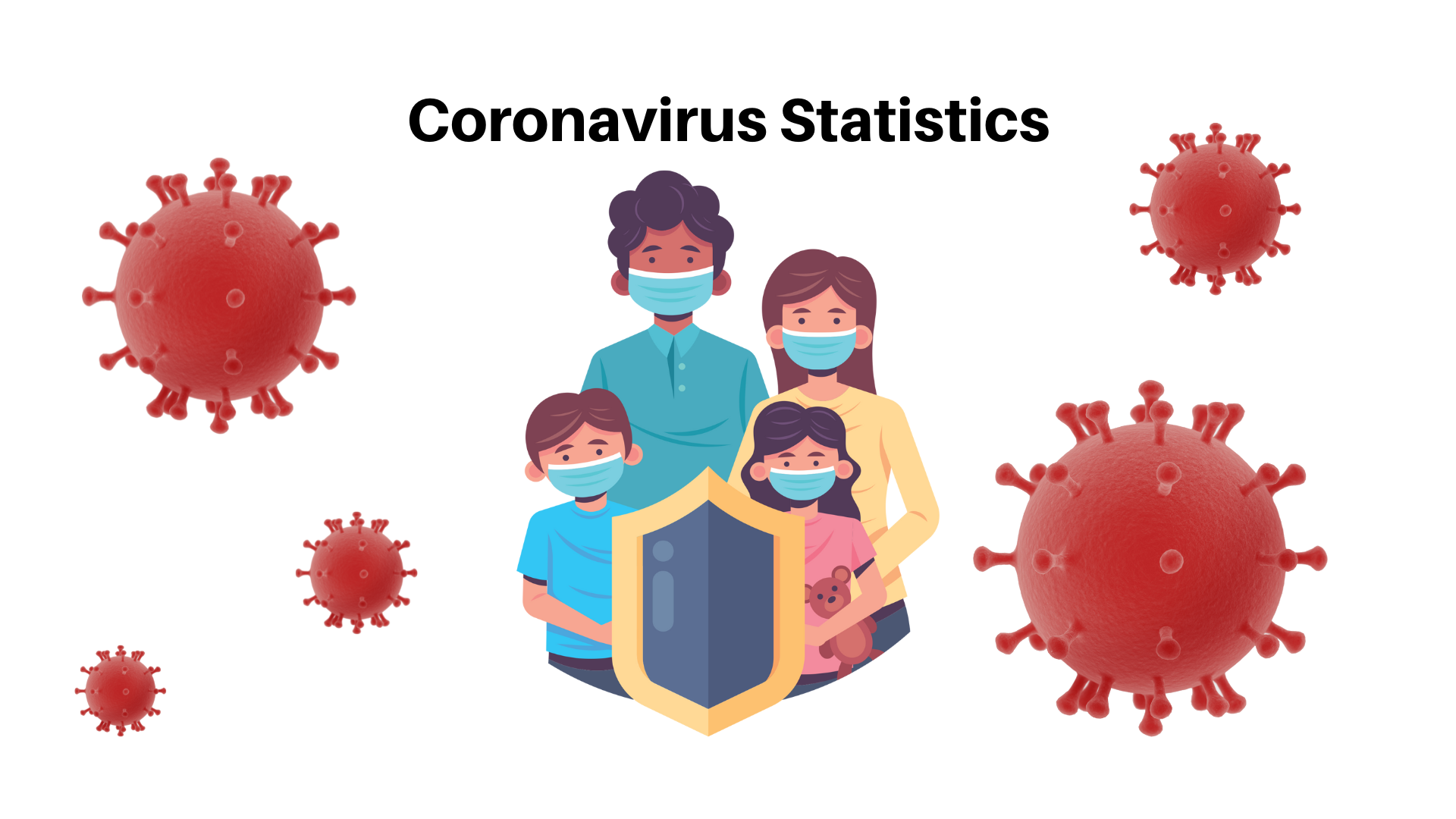
Page Contents
Introduction
Coronavirus statistics: Since December 2019, the world was going into the dark as the outbreak of coronavirus started hitting every sector around the globe. Even after the 3 years since the pandemic started, there are more than 600 million active cases. But fortunately, due to the timely invention of vaccines, the death ratio has been reduced and the recovery rate has been improved. As we are listening to the news since 2022, big companies are massively laying off employees as a post-pandemic effect.
This Coronavirus statistics is designed to get insights from around the world along with the impact of coronavirus on various sectors.
(Editor’s Choice)
- As of January 2023, the global total confirmed cases are 669,581,551 out of which 20,139,214 are recovered while 6,826,876 faced fatal death.
- The global death ratio for every 1000 people as of today is 0.88 people.
- In the month of January 2023, there are 96% active cases on a global level.
- During the coronavirus period, the largest number of people chose to watch more news resulting in 67%.
- The regional coronavirus statistics as of January 2023 state that there are 271,613,930 confirmed cases in the European region being the highest of all.
- As of January 2023, 21% of the population in north America out of 587 million is affected.
- As of 2021, the crucial factor influencing travel by air by passengers is the cabin cleanliness and airline reputation.
- Before the pandemic, more than 4.5 billion were recorded as global travelers which reduced to 1.8 billion since the pandemic took place.
- As of 2022, it was expected that air freight would increase to 69.3 million.
- Coronavirus statistics say that 4.9% of the total population of 4722 million in Asia has been affected.
Coronavirus is a group of related RNA viruses that can cause diseases in birds and mammals. Coronavirus is a part of the Orthocoronavirinae. The word Corona originated from the Latin word Crown or wreath. Coronaviruses are large in numbers as well spread roughly spherical particles. The average diameters size of the virus is 80 to 120 nm. In the month of December 2019, this virus shook the world and locked everyone inside their homes. Even after 3 years of its release, the virus is still active and affecting people across the globe.
Following are some mild symptoms observed during the first 14 days:
- Sore throat
- Muscle or body aches
- Runny nose
- Nausea or vomiting
- Diarrhea
- Fatigue
- Cough
- Fever
Severe Symptoms
- Trouble in breathing
- Difficulty in staying awake
- Continuous chest pain
- Blue-colored skin, pale gray, change in lips color
Precautions of Coronavirus
- Don’t remove your mask in public.
- Avoid going in the crowd.
- Try to stay at home as much as possible.
- Clean thoroughly your hand and face.
- Eat healthy food.
- Sanitize phone screens, door handles, or any other regularly touched surface.
- As of January 2023, 8.6% of the world population is affected by the coronavirus.
- Coronavirus state that the global rate of affecting people is 85.8 per 1000 people.
- The global death ratio for every 1000 people as of today is 0.88 people.
- As of January 2023, the global total confirmed cases are 669,581,551 out of which 20,139,214 are recovered while 6,826,876 faced fatal death.
By Recovery
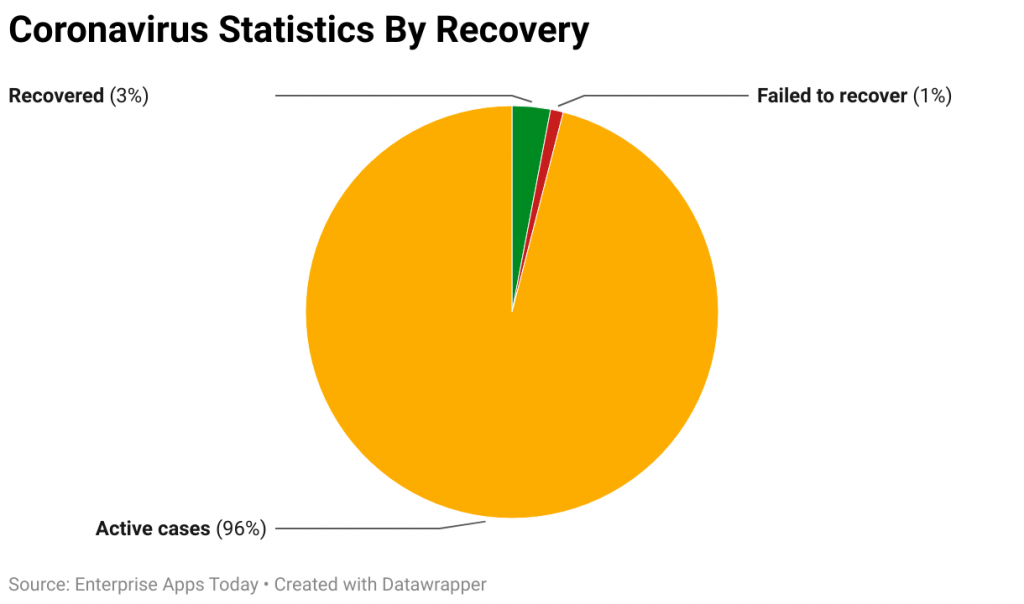
(Reference: covid.observer)
- In the month of January 2023, there are 96% active cases on a global level.
- 3% of them recovered and 1%, unfortunately, failed to recover.
By Region
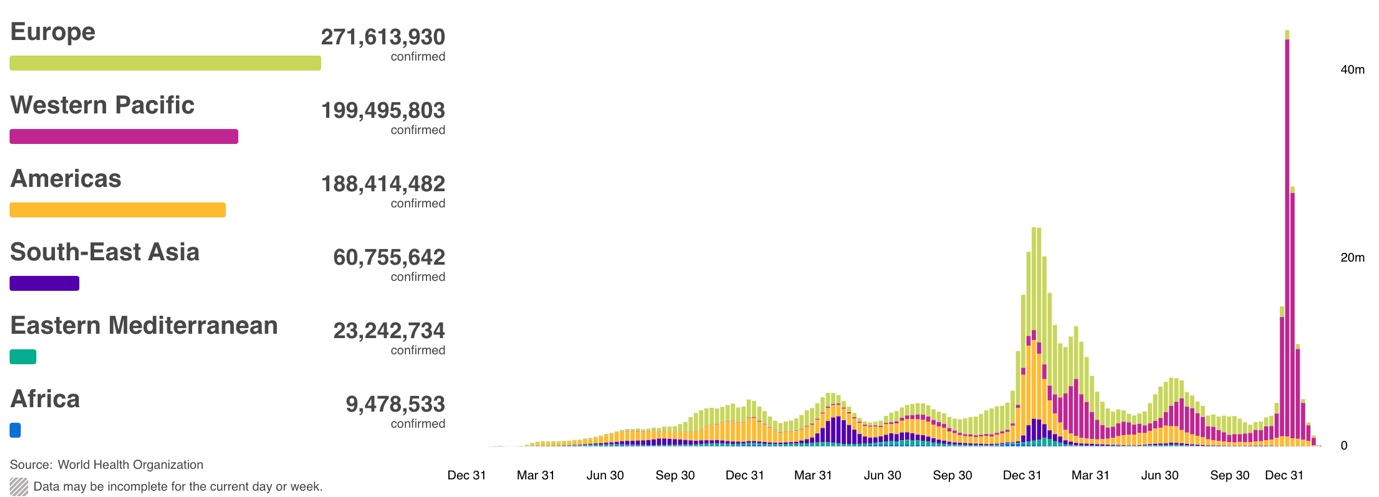
(Source: WHO (COVID-19))
- The regional coronavirus statistics as of January 2023 state that there are 271,613,930 confirmed cases in the European region being the highest of all.
- For a similar period, the western pacific has 199,495,803 and the Americas have 188,414,482 confirmed cases.
- In Southeast Asia and the eastern Mediterranean are 60,755,642 and 23,242,734 confirmed cases respectively.
- As of January 2023, Africa has the lowest number of confirmed cases resulting in 9,478,533.
Europe
- Coronavirus statistics of January 2023 state that 37% of the population in Europe is affected.
- The ratio is 370.0068 per 1000 people.
- In the European region, 2.70 patients died per 1000 people.
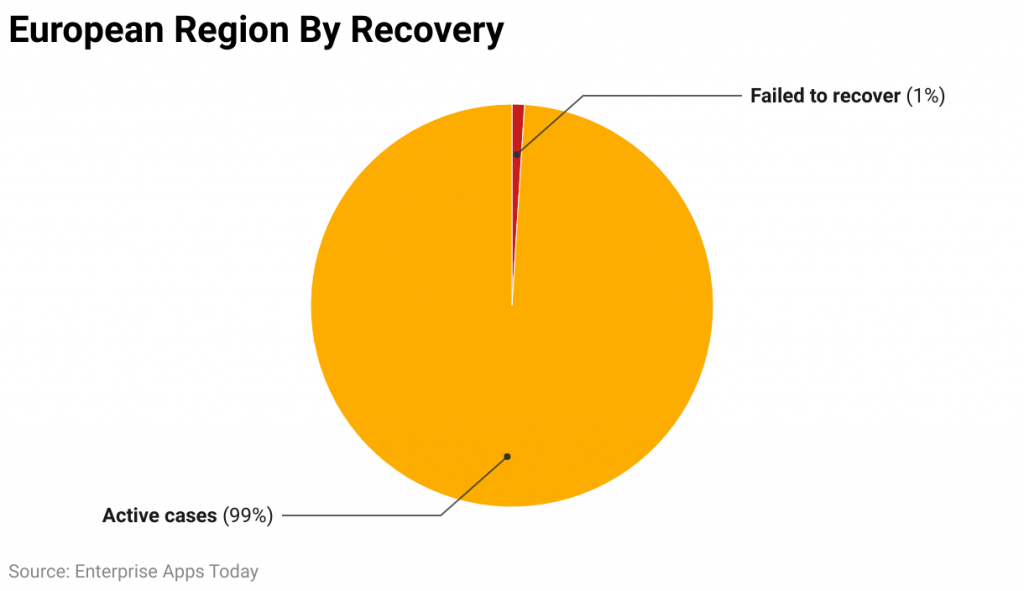
(Reference: Covid.observer)
- Coronavirus statistics of January 2023 say that in the European region, 99% of the cases are active cases and 0% of them are recovered.
- 1% of the active cases were reported to fail to recover.
North America
- As of January 2023, 21% of the population in north America out of 587 million is affected.
- There are 207 cases per 1000 people.
- 68 patients in North America died per 1000 people.
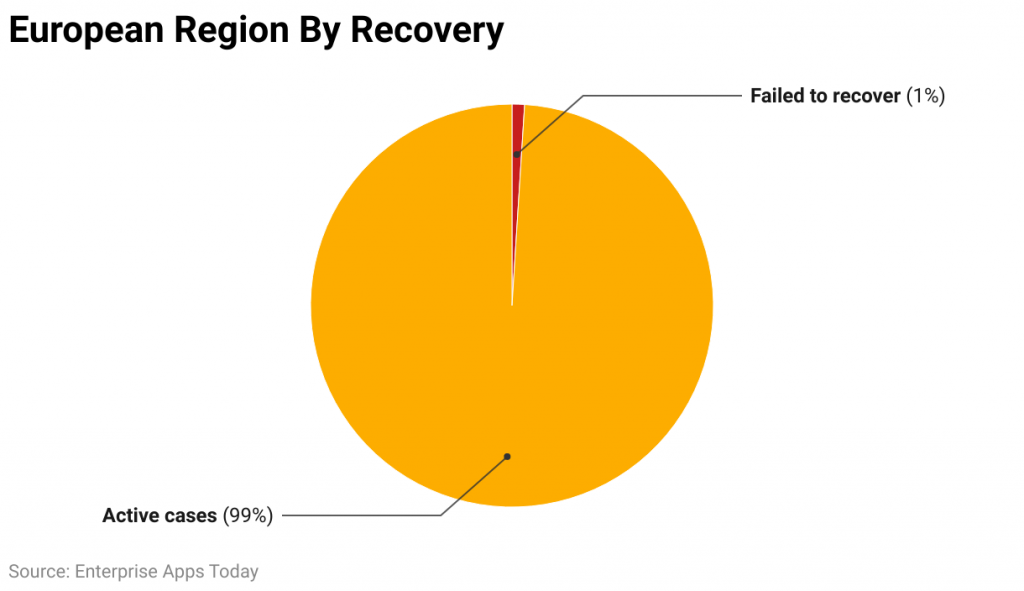
(Reference: Covid.observer)
- Similar to the European region, in North America, there are 99% of the active cases.
- On the other hand, 1% of them failed to recover and 0% recovered.
Africa
- 1% of the population in the African region out of 1282 million people is currently affected.
- 091 per 1000 people are affected and the death ratio is 0.20 for every 1000 people.
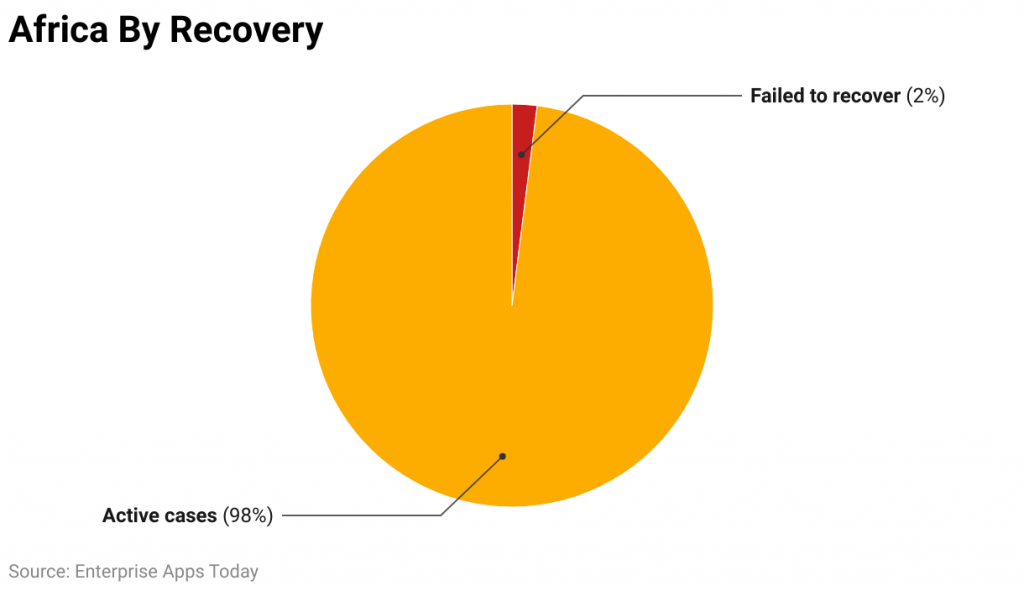
(Reference: Covid.observer)
- In Africa, there are 98% of active coronavirus cases as of today.
- 2% of them have failed to recover while the recovered rate is 0%.
Asia
- Furthermore, Coronavirus statistics say that 4.9% of the total population of 4722 million in Asia has been affected.
- In the Asian region, 48.8 patients are affected for every 1000 people.
- While the death ratio is 0.42 for every 1000 people.
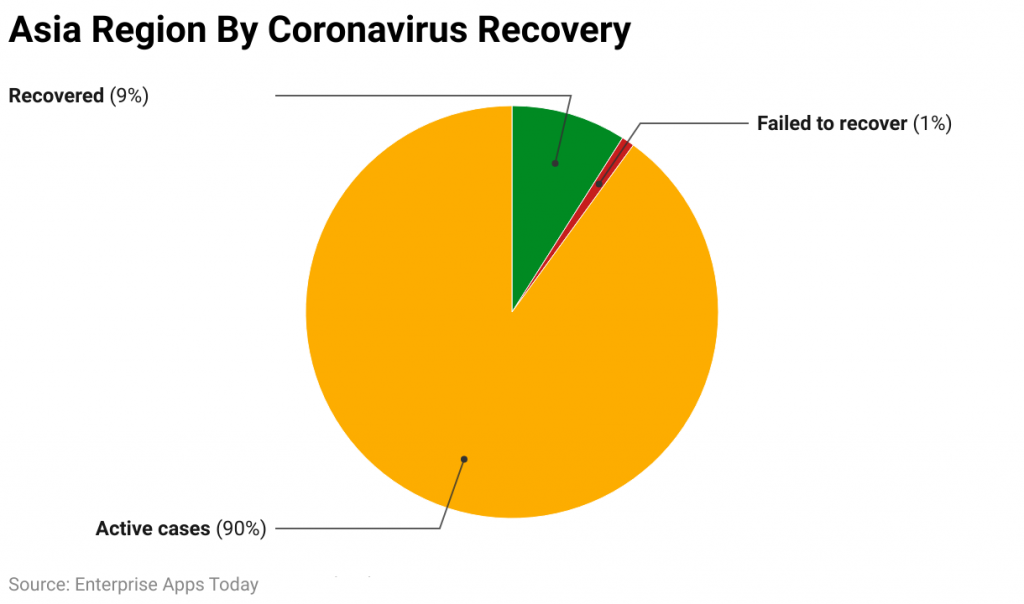
(Reference: Covid.observer)
- As seen in the above chart, the Asian region has the highest rate of recovery by 9% while 90% are active cases.
- 1% of the cases have failed to recover.
South America
- As of today, the South American region has 16% of the total population of 427 million affected by the coronavirus.
- 158 patients per 1000 people are affected while the death ratio is 3.15 patients per 1000 people.
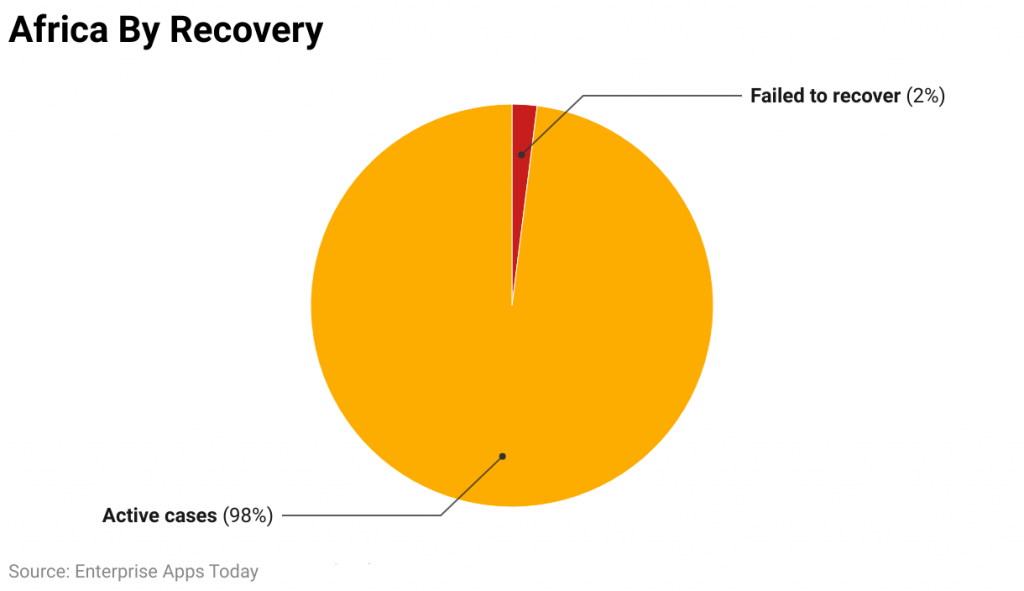
(Reference: covid.observer)
- In South America, 98% of the cases are active while 2% of cases failed to recover.
- The percentage of recovered cases in south America is 0.
By Country
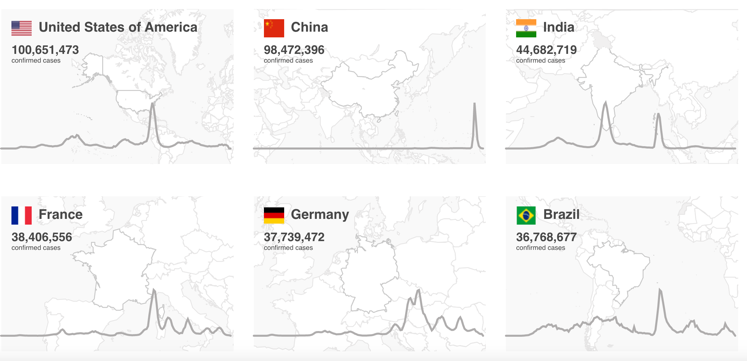
- In the United States of America as of 30th January, there are 100,651,473 confirmed cases while the highest peak in the cases was experienced in the month of January 2022.
- Similarly, China has 98,472,396 cases with a recorded peak in the month of December 2022.
- As of today, there are 44,682,719 active cases in India with the highest number of cases observed twice in the months of May 2021 and January 2022.
- In France, there are 38,406,556 confirmed cases while January 2022 observed the highest peak in the number of cases.
- In Germany and Brazil, there are 37,739,472 and 36,768,677 respectively with the highest number of cases observed in March 2022 and January 2022.

(Source: WHO (COVID-19))
- On a similar note, the following countries have confirmed cases as of January 2023; Japan (32,464,361 – peak observed July 2022), the Republic of Korea (30,157,017 – peak observed – March 2022), Italy (25,453,789 – Peak observed January 2022), The United Kingdom (24,274,361 – peak observed December 2021), Russia Federation (21,944,400 peaks observed February 2022), Turkey (17,004,677 peaks observed January 2022).
(Source: Statista)
By Demographic
- Above 14% of adults in the United States of America suffered longtime covid.
- On average,2.4% of women experienced covid symptoms as compared to men 1.3%.
- During the pandemic outbreak, 11% of men faced coronavirus difficulties while 17% of women faced the same.
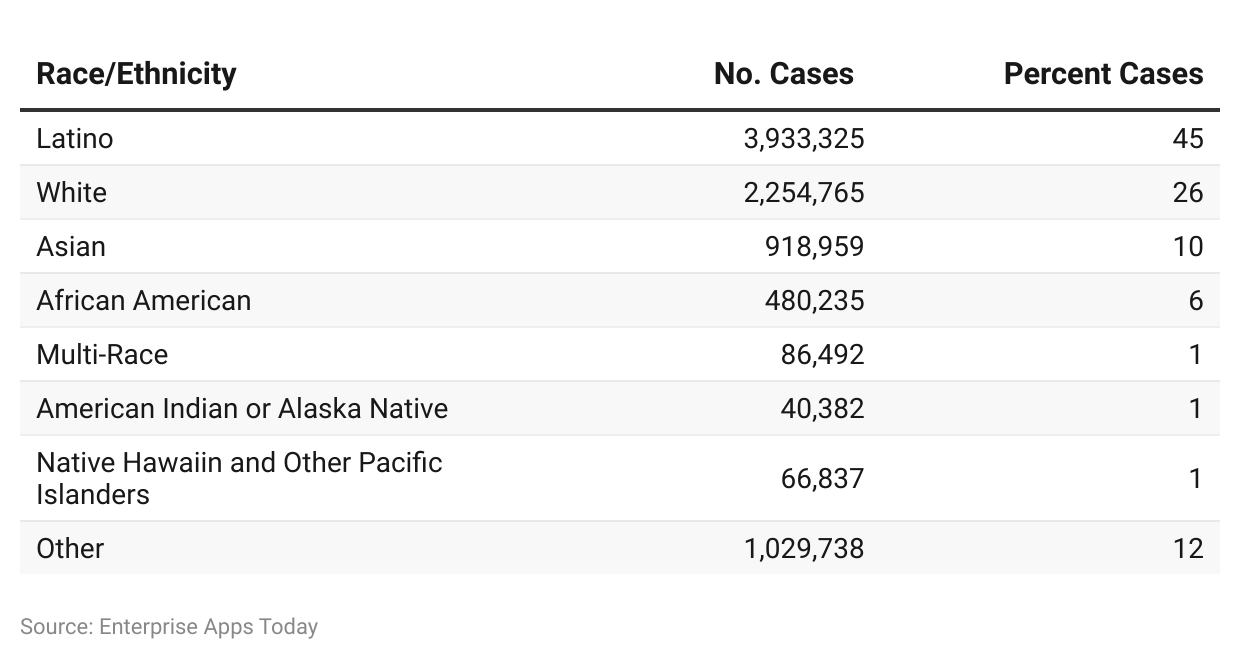 (Reference: California Department of Public Health)
(Reference: California Department of Public Health)
- According to the Coronavirus statistics, the highest number of patients were Latino by background resulting in 44.6%.
- Further, there were around 25.6% of the people from the white ethnicity group.
- 5% of the coronavirus patients belonged to African American race.
- There were only 1% of the people from multi-race and 0.5% belonged to the American Indian / Alaska native.
- 8% were from native Hawaiian / other pacific islander races while 11.7% of the people didn’t inform their ethnic background.
By The Impact On Sectors
- Global economy
- The global unemployment rate increased to 6.18%.
- The global goods trade volume as of April reduce to -11.6%.
- During a similar period, the global GDP jumped down to -3.4%.
- On the other hand, the year 2021 saw some positive changes and the global economy level captured $92.3 trillion.
On Aviation
- Before the pandemic, more than 4.5 billion were recorded as global travelers which reduced to 1.8 billion since the pandemic took place.
- Due to the pandemic, the worldwide projected loss of airlines was $370 billion.
- During the pandemic period, the airlines only generated revenue of $189 billion. Before the pandemic, the revenue in a similar segment was reported as $581 billion.
- Similarly, airports also faced huge losses of $121.8 billion.
- As of 2022, it was expected that air freight would increase to 69.3 million.
- As of 2021, the crucial factor influencing travel by air by passengers is the cabin cleanliness and airline reputation.
Restaurant food delivery in the US
- The total sales of food service and drinking places in the United States of America as of 2021 were $876.33 billion.
- During the pandemic, only 36% of the consumers in the United States of America ordered food only.
- There were only 13% of the restaurants in the United States of America provided online delivery services.
- As of 2021, digital restaurant delivery grew by 142%.
- The restaurants experienced less crowding in the places are 67% of the people started ordering the food online.
global advertising
- 88% of the people in China purchased only from brands that gave better decisions on COVID-19.
- The global cost per click on Facebook recorded a decrease to 0.79.
global tech goods are services
- The overall impact on IT spending on devices, software, and networks was -12.4%, 6.6%, and -2.1% respectively.
- As of 2021, 26% of the shippers said the supply chain has been back on track.
- More than 50 big companies reported layoffs as of 2022 and 2023 resulting in an overall of 50,000.
The global retail industry
- Consumers started to pile up goods more in China, India, and Vietnam.
- The yearly retail sales growth rate in Germany reduced to -5.7%.
- Similarly, the yearly retail sales growth rate in Italy reduced to -3.2%.
- In the United States of America, the rate was 7.8%.
- As of October 2022, the retail trade revenue growth rate in China was -0.5%
- The spending rate on jewelry consumers from the United States of America was recorded at -35%.
The global transportation and logistics industry
- On average, the different types of transportation industries in the freight, air, and sea segment were hampered severely.
- On the weekly average, the international scheduled flights were reduced by 46.4% in the pandemic years.
- As of January 2021, furthermore, flights declined by 43.5%.
- Transportation activity experienced a reduction in Italy by -30%.
- The capacity of the trans-pacific route in 2020 was -31%.
- The yearly change in the domestic European road freight market was only 1.7%.
Impact On Global Media Consumption
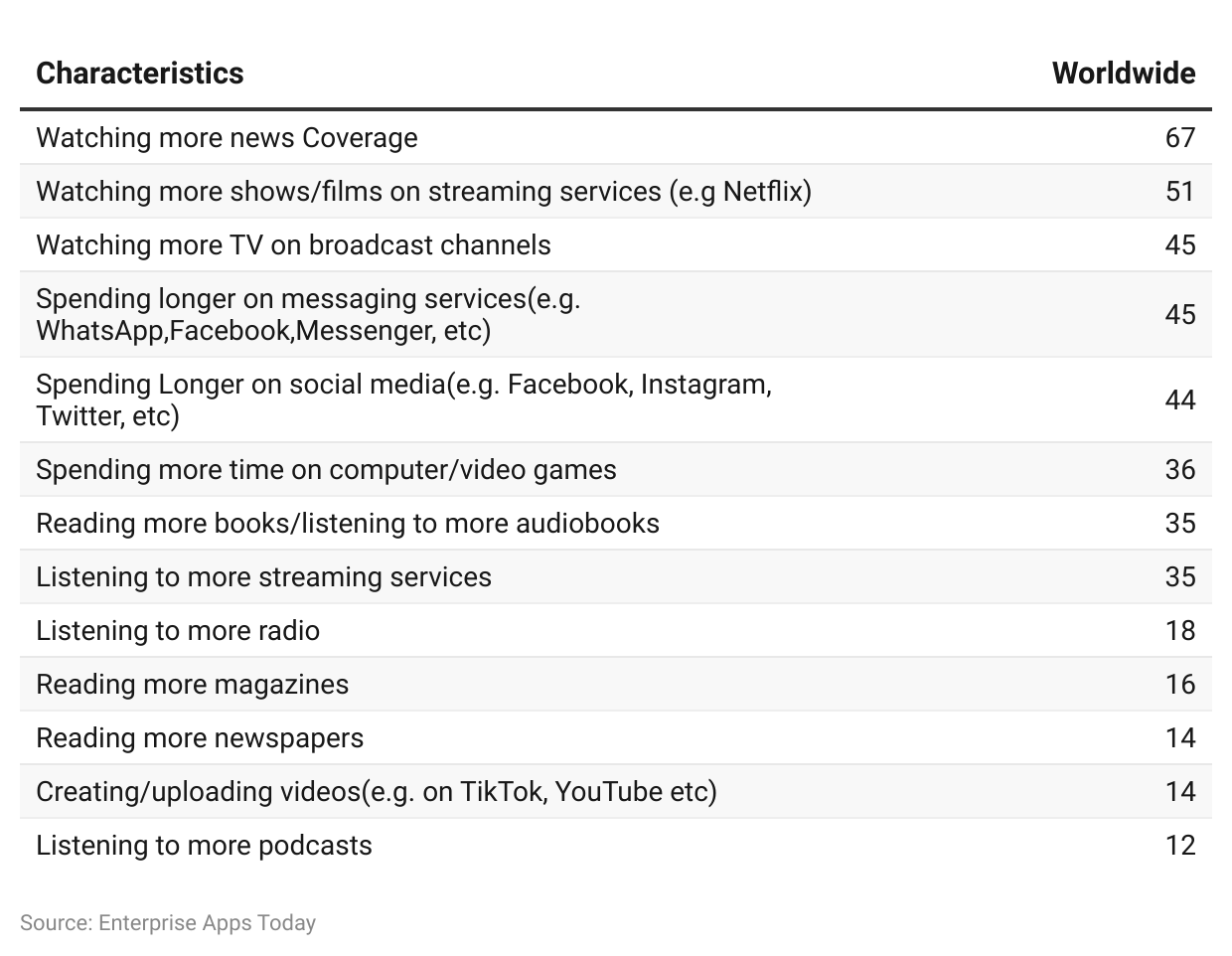 (Reference: Statista)
(Reference: Statista)
- During the coronavirus period, the largest number of people chose to watch more news resulting in 67%.
- 51% of the population around the globe chose to subscribe to various OTT platforms such as Netflix etc.
- 45% of the people started watching more of the broadcast channel while 45% of the people started spending more time on messenger services such as WhatsApp, Facebook Messenger, etc.
- With a minor difference, 44% of people spent more time on social media networks such as Instagram, Twitter, Facebook, etc.
- 36% of the global population spent more time on video/computer games, while 35% of the population went for more reading books and listening to audiobooks.
- Similarly, 35% and 18% of the population started to listen more to streaming and radio services respectively.
- 16%, 14%, and 12% population around the world chose to spend time more reading newspapers, creating videos for social media, and listening to podcasts respectively.
Conclusion
It’s been 3 years since the pandemic hit the world, and yet even after developing the vaccine, people around the globe are still facing COVID symptoms. Looking at the Coronavirus statistics, the world has been facing difficulties in all types of sectors. As of 2023, the news is flashing with the letter of the upcoming recession which is followed by multiple layoffs in big companies. In some countries, the recession has already started while some are going slowly towards it. This is all the post-pandemic effect. Therefore, it is a must to take precautions by all means.
Sources
FAQ.
Coronavirus travels from the air and can be found on any object or person. If you come into any contact with any of these things there is a high chance that you might get affected by a coronavirus.
As of today, there’s no cure for coronavirus. But there are medicines and vaccines to treat the virus.
Yes, as long as the country you are traveling to doesn’t have restrictions on travel you can freely travel.
Yes, in order to enter any place or country you are required to provide the vaccination certificate.

Barry is a lover of everything technology. Figuring out how the software works and creating content to shed more light on the value it offers users is his favorite pastime. When not evaluating apps or programs, he's busy trying out new healthy recipes, doing yoga, meditating, or taking nature walks with his little one.